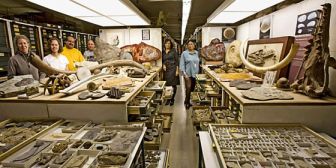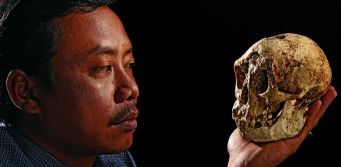USA 1946 "100th anniversary of the founding of the Smithsonian Institution"
| <prev | back to index | next> |
| Issue Date | 10.08.1946 |
| ID | Michel: 548 Scott: 943 Stanley Gibbons: 940 Yvert: 495 UPU: N/A Category: Ot |
| Author | |
| Stamps in set | 1 |
| Value | 3c - 100th anniversary of the founding of the Smithsonian Institution |
| Size (width x height) | |
| Layout | 50 stamps per sheet |
| Products | FDC x |
| Paper | |
| Perforation | 11x10.5 |
| Print Technique | Rotary Press, two colors: violet, brown |
| Printed by | Bureau of Engraving and Printing |
| Quantity | 139,209,500 |
| Issuing Authority | U.S. Postal Service |
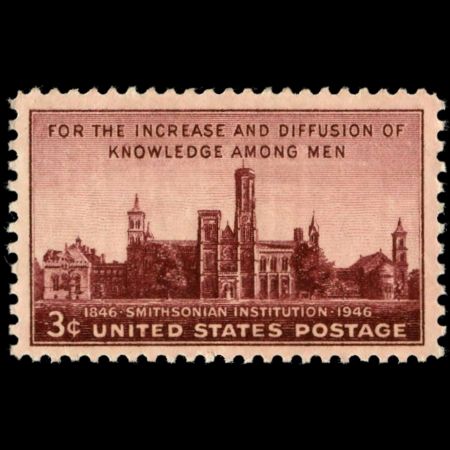
James Smithson(1764-1829), an English scientist who never set foot in America, left his entire estate to the United States to found an establishment for the increase and diffusion of knowledge among men. It has never been clear why Smithson left the fortune to a country with which he had no connection. Speculation focuses on his not being allowed to use his family name, due to his illegitimate birth (to the Baronet of Stanwick, north Yorkshire).
The estate only passed to the U.S. after Smithson's first beneficiary, Henry James Hungerford, died without heirs. First accepted by President Andrew Jackson, the fortune ($500,000 American dollars) was placed in a trust for the founding of the Smithsonian Institution, passed by Congress and signed by President Polk in 1846.
Architect James Renwick won the competition to design the building, and construction began in 1847. It was completed in 1855 and is commonly called "the Castle". After more than 150 years, the institution has grown to 19 museums, one zoo, and nine research centers. Among the most popular are the National Postal Museum, the Air and Space Museum, the Zoological Park, and the Museum of Natural History.
The National Museum of Natural History (NMNH) is part of the Smithsonian Institution, the world's preeminent museum and research complex.
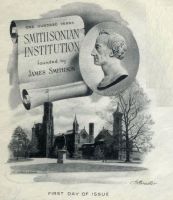 |
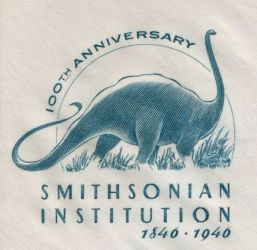
09.08.1946, with this American FDC, and that the theme 'Prehistoric life in Philately' was born on this date. |
|
Department of Paleontology |
Human origin site of Smithsonian Museum |
| FDC: thre are at least two dozen of FDCs with the stamp, only few of them are shown below. | |
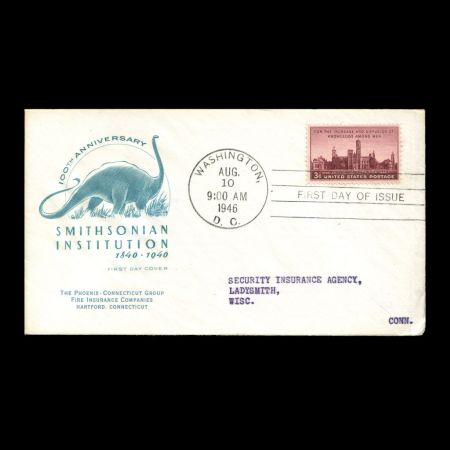
|
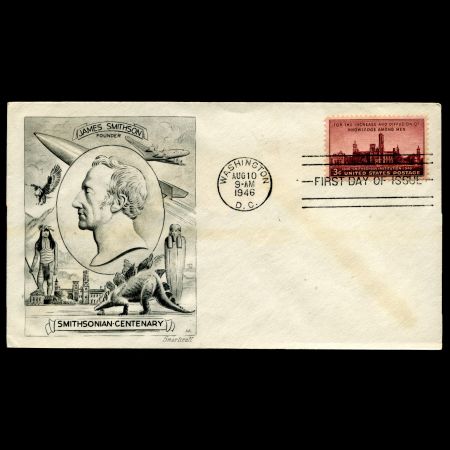
|
| Stamps Sheet | Used FDC |
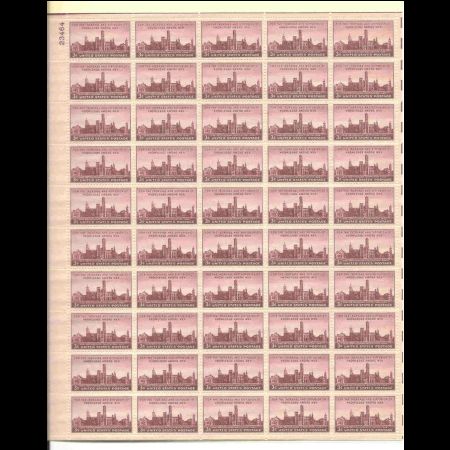
|
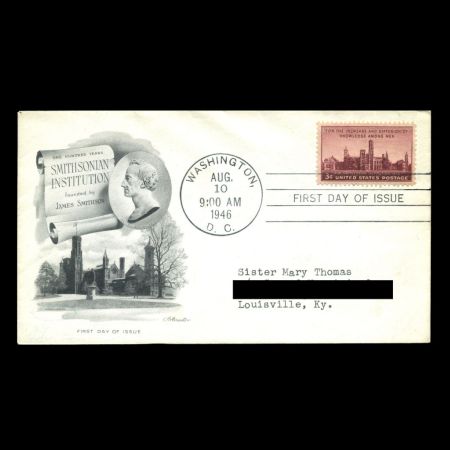
|
References
Smithsonian Institution mysticstamp| <prev | back to index | next> |
